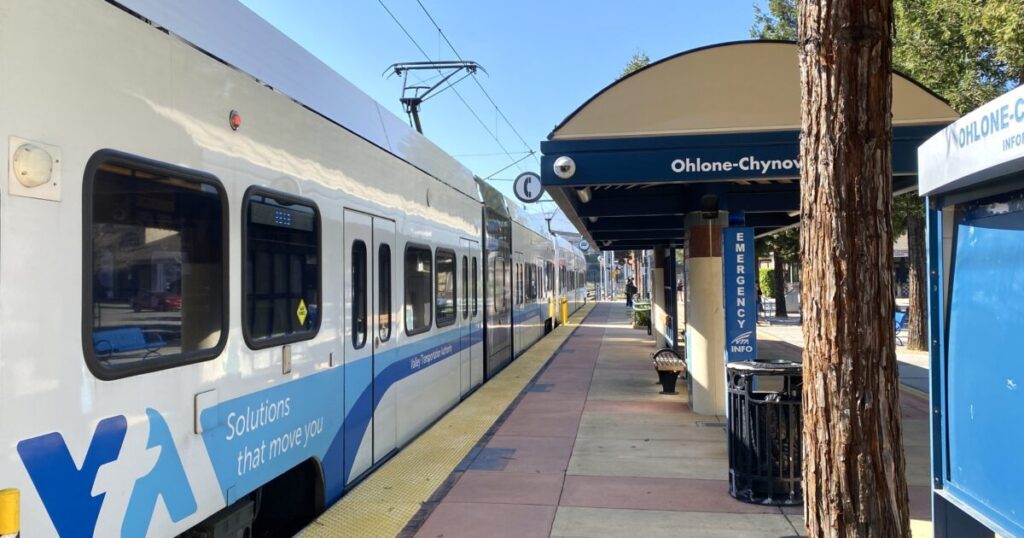VTA could join a regional sales tax measure benefiting public transit in 2026, but is deciding how to balance local needs.
State legislators are considering a new sales tax district to support transit across the Bay Area through Senate Bill 63. VTA’s board of directors will weigh whether Santa Clara County should opt into the tax, pursue their own measure or both.
Agency employees discussed SB 63 and other possible revenue generators, such as a VTA-specific measure, at an April 25 board workshop. The board is scheduled to get more details on the measure options and public polling results Thursday.
SB 63 is spearheaded by state Sens. Scott Wiener and Jesse Arreguin, and is making its way through various Senate committees. The bill would allow for either transit agencies or voter initiatives to put a sales tax on the November 2026 ballot. It also lists four Bay Area transit agencies as possible recipients, but doesn’t include VTA. Agency employees said at the April 25 meeting the tax could help VTA pay funding obligations to Caltrain.
At the same time, VTA management wants to renew Measure A, a half cent sales tax approved by voters in 2000. It’s scheduled to sunset in 2036. The measure is expected to generate more than $290 million in fiscal year 2025.
Monica Mallon, a public transit advocate and San José Spotlight columnist, said she wants to see VTA board members take local riders into consideration when weighing the possible measures.
“The thing the board needs to consider the most is VTA’s own interest,” Mallon told San José Spotlight. “VTA has clearly shown that they’re able to recover and grow ridership, and I think that really shows that riders would benefit from more service and this is a growing market.”
She also voiced concerns with a potential voter initiative, which she thinks could face legal challenges because it’s being sanctioned by a state bill.
VTA could choose to opt into a regional tax measure and still pursue a county-specific measure. However, Mallon said it might be harder to meet the 66.7% voter approval threshold on any tax measure, as the economy gets tighter.
“I think that the board has been really taking the right approach here and considering things carefully, I would just caution them to not act too quickly and rush things,” Mallon said. Glenn Hendricks, former Sunnyvale mayor and a former VTA board member, said he was skeptical Santa Clara County residents would receive as much benefit if they were opted into a regional measure. He said VTA should pursue a specific in-county measure to ensure the money generated supports Silicon Valley transit, rather than subsidizing transit in other parts of the Bay Area.
Glenn Hendricks, former Sunnyvale mayor and a former VTA board member, said he was skeptical Santa Clara County residents would receive as much benefit if they were opted into a regional measure. He said VTA should pursue a specific in-county measure to ensure the money generated supports Silicon Valley transit, rather than subsidizing transit in other parts of the Bay Area.
“Those other counties can do whatever they want, I just don’t think it’s in Santa Clara County voters’ best interest to participate in that,” Hendricks told San José Spotlight. “We need more money to help transit go, that’s not my issue. My issue’s just very selfishly me, as a voter and as a taxpayer, I just want my money to stay here.”
The VTA board of directors meets Thursday at 5:30 p.m.
This story will be updated.
Editor’s Note: A previous version of the story provided Measure A revenue generated for operations instead of total revenue in fiscal year 2025.
Contact B. Sakura Cannestra at [email protected] or @SakuCannestra on X.


